The sphinx pose in yoga offers a wide variety of benefits, especially in our current culture of sitting for prolonged periods of time.
When we sit, it is quite easy to slump as we focus in on our computer or other forward tasks. This sets us up for back pain, pelvic organ prolapse, and urinary incontinence.
To maintain optimal seated alignment, we need both the mobility of the spine as well as strength to hold ourselves upright. Sphinx offers input into the spine in the reverse direction of the slump. Pair it with conscious breathing and it is a fabulous way to encourage the pelvic floor muscles to let go.
You can place a pillow under the abdomen or rest your chest on a pillow if the stretch is too intense in the lumbar spine or abdomen.
Once in this position, you can layer pranayama, or breath work, into the posture.
Using the breath
Dirgha is a relaxing breath to integrate in sphinx. This three-part breath starts by inhaling and allowing the belly to fill.
The second part of dirgha is expanding the rib cage, with an extra focus to the side aspect of the rib cage.
The third aspect of this breath is allowing the collarbones to float up, but in this pose, just imagine this aspect.
After trying this for 10 breath cycles, stop and recognize any new sensations or softening in the body.
I also like using the “letting go breath” in this posture. “Letting go breath” is a quick reboot you can practice anywhere:
- Inhale through your nose.
- Exhale out on a sigh.
- Repeat as often as you like.
The letting go breath can be performed quietly but it can also be used to create a big sigh of tension out of the body.
Visualization
Another useful strategy to layer into this posture is using breath cues to visualize elongation and releasing of the pelvic floor muscles.
My friend Aline Flores taught me this visualization:
- As you inhale, imagine your pelvic floor is expanding like a balloon.
- As you exhale, imagine the pelvic floor muscles soften and release without rebounding, as if the balloon was emptying out thru the bottom of the balloon.
You might also enjoy the “Breath Cues” PDF available on this site.
Cues
In Sphinx with your elbows under your shoulders, play with shoulder blade position. Allow your chest to sink towards the floor. This brings your shoulder blades towards each other into scapular retraction. Then push your forearms down into the floor. This brings your shoulder blades apart into scapular protraction. You can also isometrically (without physically moving) pull your elbows back towards your pelvis to traction your spine.
Find a place that is comfortable for your head. Some people will focus on length thru the spine and some people will want to look forward or bring the head down.
The width of your legs will change how you feel in the posture. If you are having back or sacroiliac joint pain, try bringing your legs further apart. This will decompress the spine and hopefully find a more comfortable position.
Lastly, play with the energetics of the posture. While this is commonly prescribed to increased spinal extension and myofascial release of the low belly, it is also a beautiful heart opener. Imagine your diaphragm and bottom of your breastbone are shining forward as you press your elbows and forearms down into the ground and back.
Benefits
Sphinx pose has several benefits:
- stabilizes the shoulders
- myofascial release of the abdomen
- increases tissue excursion after abdominal surgery (with guidance after 8 weeks)
- strengthens back musculature
- lengthens of the abdominal wall without over-stretching the anterior hip capsule
Breath work calms the sympathetic nervous system, important for retraining the brain to rewire the pain response. Dampening the fight or flight response also helps with overactive bladder syndrome and urinary urgency.
Contraindications
This pose should be modified for you if you:
- have a spondylolisthesis (it may work to do a small sphinx at the wall)
- are in the second or third trimester of pregnancy (modify to a small sphinx at the wall)
- have had recent abdominal surgery (follow surgeon’s guidelines)
Precautions that you can work with your physical therapist with are:
- limited trunk extension range of motion
- pain that increases with extension, i.e.: spinal stenosis
- sacroiliac dysfunction
- active flare of bladder or abdominal pain/menstrual pain/endometriosis

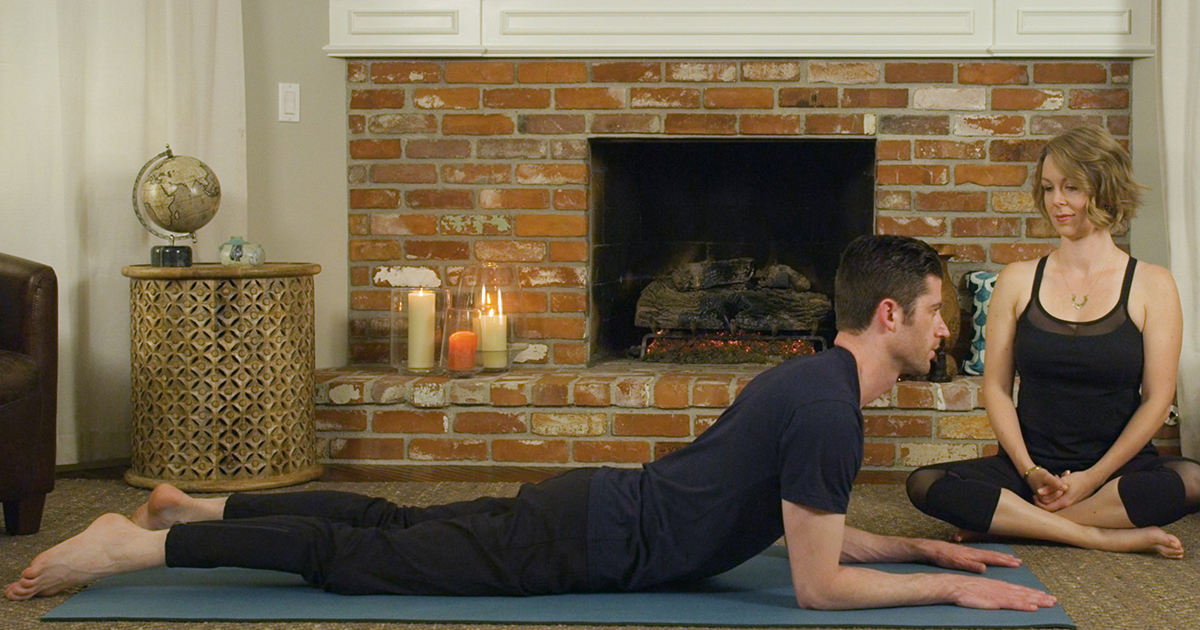
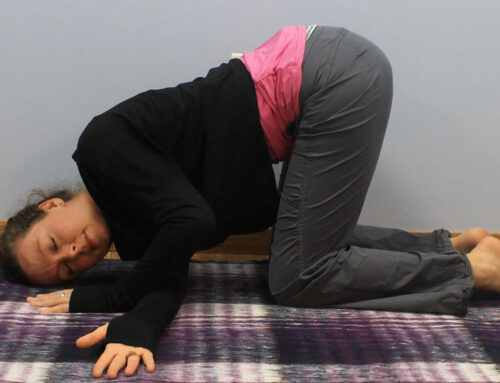
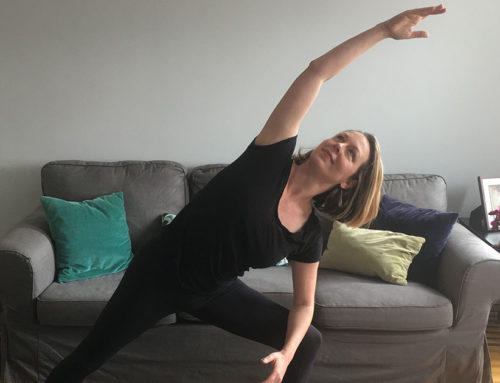

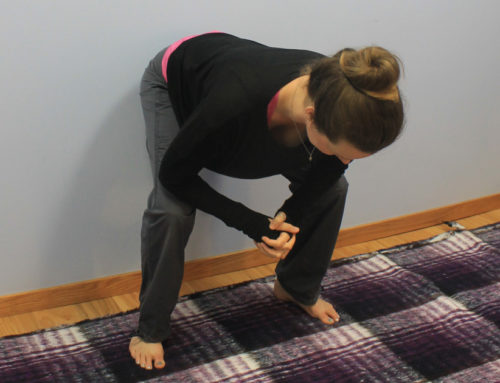
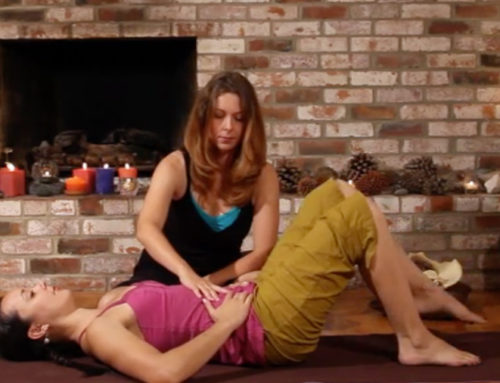
[…] the spine in all directions: Cat/Cow, Child’s Pose, Thread the Needle, and Sphinx. Spend time in the pose that your body needs the most. Be sure to warm up your hands and forearms […]
[…] that spinal extension and abdominal flexibility is available to the body as a movement option. Sphinx and Cobra are two postures that people find helpful in creating and maintaining back extension and […]